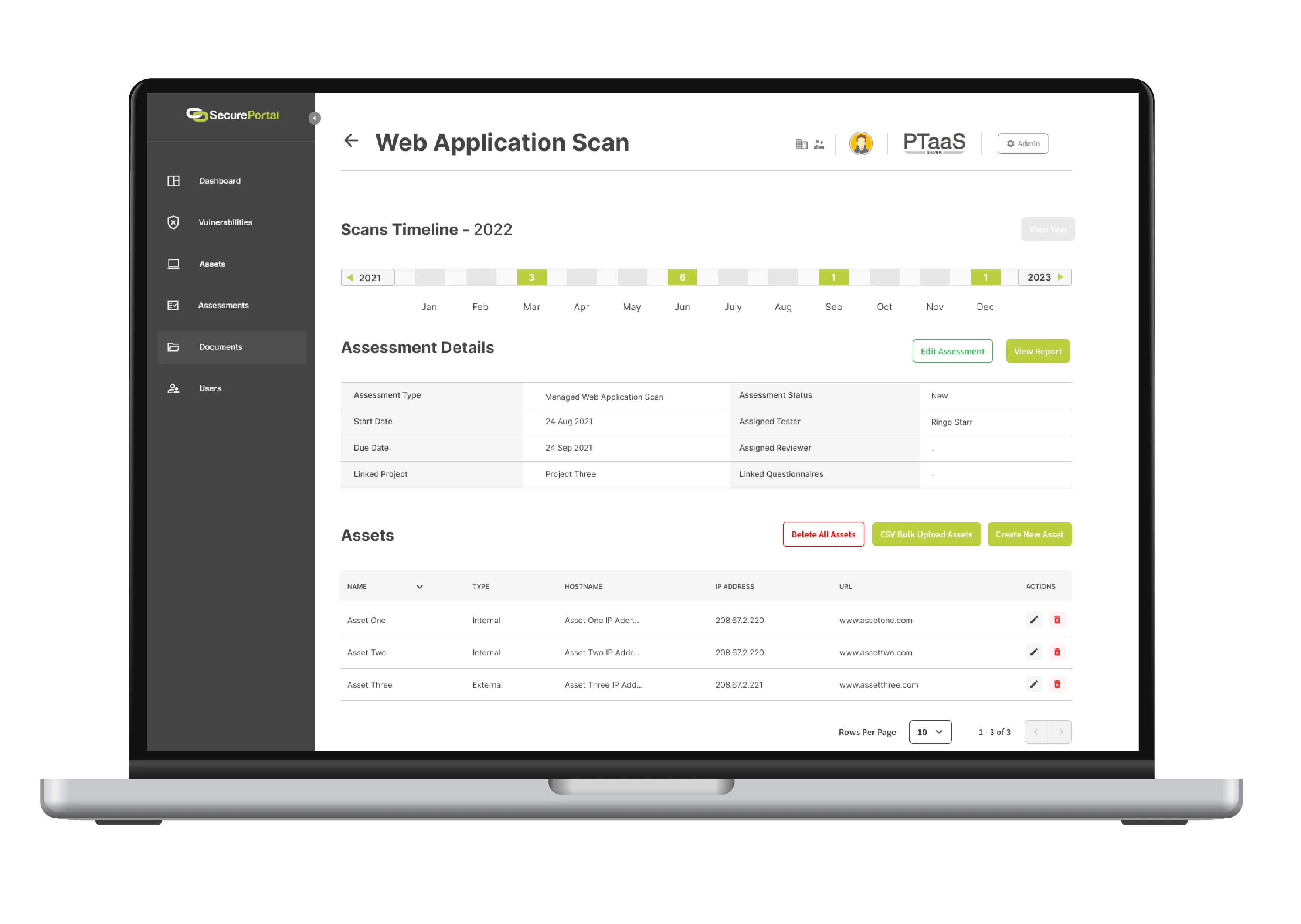Penetration Testing vs Vulnerability Scanning: What’s the Difference?


What is Penetration Testing?
Penetration Testing (also known as pentesting or ethical hacking) is a simulation of an attack on a computer system, network, or web application to identify potential security vulnerabilities and gauge the effectiveness of existing security measures. Penetration tests are typically performed by cybersecurity professionals with specialised knowledge and experience in identifying and exploiting system vulnerabilities.
Benefits of Penetration Testing
Penetration testing helps companies:
- Identify security vulnerabilities within your organisation, allowing you to proactively remediate any issues.
- Improve your security posture allowing you to reduce the threat of a cyber attack occurring against your business.
- Proving to your supply chain that you are taking the necessary precautions to ensure your strong security posture.
- Being able to focus your efforts on high-risk items identified in the Penetration Testing report.
What is Vulnerability Scanning?
Vulnerability scanning is an automated security audit that identifies potential vulnerabilities in a system or network. Vulnerability scans can range from simple port scans to more advanced tests that use specific attack signatures or exploit known vulnerabilities. Vulnerability scanning helps organisations identify weaknesses or misconfigurations in their systems, networks and applications before malicious actors can exploit them.

Benefits of Vulnerability Scanning
Vulnerability scans can help organisations:
- Identify weak points in their system that may be susceptible to attack or exploitation from malicious actors.
- Provide a baseline of risk and security gaps within their systems, networks and applications allowing you to remediate any issues quickly and proactively.
- It gives a comprehensive view of the security posture of the system or network, allowing you to understand better what potential risks may exist and how to remediate them.
- Ensuring that their systems are regularly monitored for any changes in the environment which could lead to new vulnerabilities being introduced.
What is the Difference Between Penetration Testing and Vulnerability Scanning?
The key difference between Penetration Testing and Vulnerability Scanning is that experienced professionals manually perform penetration tests, whereas vulnerability scans are automated. Penetration tests typically go beyond just checking for vulnerabilities to simulate a real-world attack scenario and test how effective the security measures are at defending against such an attack. Vulnerability scans, on the other hand, will identify potential vulnerabilities but do not attempt to exploit them.
Penetration Testing and Vulnerability Scanning are essential components of an effective security strategy. Penetration tests can provide a deeper understanding of the system’s security posture and help identify any remaining weaknesses that malicious actors may exploit. Vulnerability scans can provide organisations with an understanding of the current security vulnerabilities present in their system and allow them to remediate any issues before they are exploited quickly.
Conclusion
Ultimately, both Penetration Testing and Vulnerability Scanning can help organisations identify potential weaknesses in their systems, networks and applications and provide insights on how to secure them best.




.webp)







.svg)







.webp)

